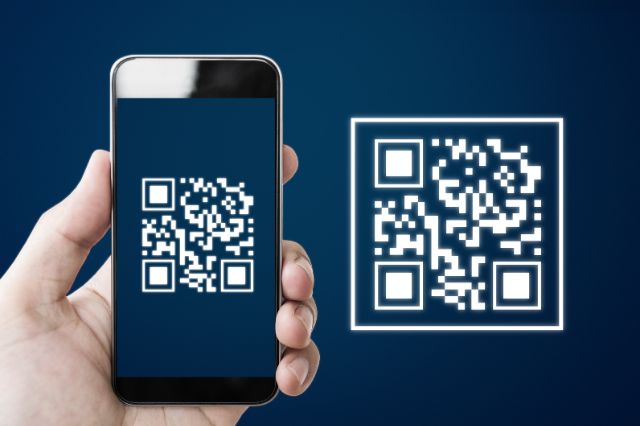Business
7 Characteristics of an Effective Business Website


Are you looking to create a website for your business, but not sure where to start? Or maybe you’ve created a website, but it’s not generating the results you hoped for? In either case, you’re in luck. In this post, we will outline seven characteristics of an effective business website that will help you create or improve your website by yourself or with the help of a UI/UX design agency. Let’s get started!
1. Clean and modern design
A well-designed website is essential for any business that wants to compete in today’s digital marketplace. A clean and modern design is the first step in creating a professional and trustworthy online presence. Websites that are cluttered or outdated send a signal to potential customers that the company is not keeping up with the times. In contrast, a sleek and modern website conveys a message of competence and professionalism.
2. Easy to navigate
There’s nothing worse than landing on a website that’s difficult to navigate. You know the feeling- you click on a link and suddenly you’re lost in a sea of pages with no idea how to get back to the home page. Or you click on a product and find yourself bombarded with options and technical jargon. It’s frustrating, and it’s enough to make any potential customer click away in search of an easier site. That’s why easy navigation is such an important characteristic of an effective business website. Fortunately, there are some practical tips you can follow to ensure your site is easy to navigate. First, make sure your links are clearly labeled and easy to find. Second, use drop-down menus sparingly- too many options can be overwhelming for users. Finally, keep your pages uncluttered and focused on a single task. By following these tips, you can help ensure that your website is easy to navigate and that customers will stick around long enough to learn more about your products or services.
3. User-friendly
Creating a user-friendly website is essential for any business that wants to succeed online. After all, visitors are far more likely to buy from a site that is easy to navigate and use. So, what makes a website user-friendly? Here are a few practical tips:
- Always put the user first: When designing your website, always keep the user in mind. Ask yourself how they will interact with the site and what their needs are. Then, design accordingly.
- Use clear and concise text: The text on your website should be clear and concise. Avoid using jargon or technical terms that might confuse visitors.
- Include calls to action: Calls to action help to guide users through your site and encourage them to take the desired action, whether it’s buying something or opting to be on your mailing list.
- testing: User testing is one of the best ways to ensure your website is user-friendly. Get feedback from real users about your site’s design, navigation, and content. This will help you identify any areas that need improvement.
4. Fast loading times
Time is money, and when it comes to business websites, that adage has never been more true. In today’s fast-paced digital world, people have little patience for slow-loading pages. If your website takes more than a few seconds to load, you’re likely to lose potential customers before they even have a chance to see what you have to offer. So how can you ensure that your website loads quickly? Here are a few practical tips:
1. Optimize your images. Large or unoptimized images can drag down your loading times. Make sure your images are compressed and saved in the correct file format (PNG or JPEG) for the web.
2. Minimize your code. Keep your HTML and CSS code clean and simple. Avoid using unnecessary code bloat from plugins or third-party applications.
3. Use a content delivery network (CDN). A CDN can help to distribute the load of your website across multiple servers, making it faster for visitors to access your site.
4. Enable caching. Caching can help to improve loading times by storing frequently accessed files on the user’s local computer. This way, the files don’t need to be downloaded from the server each time they’re accessed.
Remember to follow those points as they can help you ensure that your website loads quickly and efficiently, providing a better experience for your users and helping to improve your bottom line.
5. Mobile responsive
In these modern times, it is essential that businesses have a website that is mobile responsive. More and more people are using their phones and tablets to access the internet, and if your website is not designed to be viewed on these devices, you will lose out on potential customers. There are a few things you can do to make sure your website is mobile responsive. First, check to see if your website uses responsive design. It usually translates into a site that will change itself and the content on it to fit the screen size of the device it is being viewed on. If it does not, you will need to make some changes. Another thing to consider is the amount of content on your site. Too much text can be difficult to read on a small screen, so try to keep your content concise and easy to scan. Finally, make sure your buttons and links are big enough to be easily clicked on a touch screen. By following these tips, you can ensure that your website is accessible to everyone, no matter what device they are using.
6. SEO optimized
These days, it’s not enough to just have a website – your website needs to be optimized for search engines if you want it to be successful. Fortunately, there are a few simple tips you can follow to make sure your site is as search engine friendly as possible. First, choose your keywords carefully. When deciding which keywords to target, think about what potential customers are likely to search for when looking for a business like yours. Make sure to include these keywords throughout your site, including in the title and meta tags of each page. Secondly, keep your content fresh and relevant. Search engines love new content, so regularly adding new blog posts or product pages can help improve your ranking. Finally, don’t forget to promote your website offline as well – include your web address on business cards, flyers, and other marketing materials.


7. Contains up-to-date information
In today’s fast-paced digital world, it’s more important than ever for businesses to have an up-to-date website. Not only does this give potential customers a place to learn more about your company and what you have to offer, but it also shows that you are keeping up with the latest trends and technologies. So what are some tips for ensuring that your website is always up to date? First, make sure to regularly check all of your content for accuracy and timeliness. If you have a blog, be sure to post new articles on a regular basis. You should also keep an eye on your competitors’ websites and make sure that you are offering the most current information and products.
Conclusion
A well-designed website is an important tool for any business that wants to attract and retain customers in the digital age. If you’re looking to create a website that is not only effective but also visually appealing, you may want to consider working with a UI/UX design agency. These agencies specialize in creating user-friendly websites that are both easy to use and aesthetically pleasing. They can help you come up with a layout and design that reflects your unique brand and appeals to your target audience. In addition, they can provide guidance on how to make sure your website is optimized for search engines and provides a great user experience. If you’re considering creating or redesigning your business website, be sure to contact a UI/UX design agency today.
Law
Legal Lifelines: How Personal Injury Attorneys Rescue Your Rights and Recovery


Life can take a sharp turn in the blink of an eye. One moment, you’re going about your day as usual; the next, you find yourself grappling with the aftermath of an injury.
The consequences can be profound, whether it’s a car crash, a workplace mishap, or a slip-and-fall incident. They can affect your physical health, financial stability, and emotional well-being.
In such moments of crisis, personal injury attorneys emerge as the unsung heroes, extending a lifeline to those in need. With their expertise, dedication, and unwavering commitment to justice, these professionals play a pivotal role in safeguarding individuals’ rights and recovery.
The Anatomy of a Personal Injury Case
It’s important to comprehend the components of a personal injury case before diving into the priceless contributions made by personal injury attorneys. Fundamentally, a personal injury claim occurs when someone is harmed as a result of the careless, reckless, or malicious actions of another party.
This harm can encompass a broad spectrum of injuries, ranging from physical to psychological. Moreover, it can occur in various settings, including on the road, at work, or on someone else’s property.
There are various types of personal injuries that you can suffer. Some of these injuries include vehicle accidents, slip-and-falls, medical malpractice, product liability, wrongful deaths, etc.
Once a personal injury occurs, the injured party can file a lawsuit to seek compensation. Consider the example of a recent car accident in Chicago, Illinois (IL). As covered by an NBC Chicago news article, two pedestrians were severely injured in a car crash. The crash occurred in the Ukrainian Village in Chicago, IL.
Both pedestrians were taken to the Stroger Hospital. Treating the injuries required a lot of medical expenses. Since the accident was not the pedestrians’ fault but that of the driver who crashed the vehicle, the victims can seek compensation. This can be done through a personal injury lawsuit.
Personal injury attorneys in Chicago, IL, can help the victims build a strong case against the negligent driver. They can help the pedestrians seek the rightful compensation for their damages.
There are several other things that personal injury lawyers can do to help a victim throughout the legal proceedings.
The Role of Personal Injury Attorneys
Personal injury attorneys are the guiding light in this intricate dance of legal proceedings. They help navigate the maze of statutes, regulations, and precedents precisely and skillfully.
Their multifaceted role encompasses a myriad of responsibilities, each geared towards protecting the rights and interests of their clients.
Legal Expertise and Advocacy
Their profound understanding of tort law is central to personal injury attorneys’ mission. It is the branch of civil law that governs personal injury claims. Armed with this knowledge, they meticulously analyze each case’s circumstances, identifying potential legal theories and avenues for recourse.
Whether it’s establishing negligence, proving causation, or quantifying damages, these legal experts leverage their expertise to construct compelling arguments. Moreover, personal injury attorneys serve as staunch client advocates, tirelessly championing their cause in negotiations and courtrooms.
Negotiation and Resolution
One of the hallmark skills of personal injury attorneys is their adeptness at negotiation. According to Nolo, personal injury negotiation requires contacting the insurance claims adjuster. Moreover, you need to have a settlement amount and avoid jumping on the first offer you get.
Negotiating might sound simple, but it is not. Insurance companies use different tactics to determine a settlement amount. This is where personal injury lawyers can help. Recognizing that most cases are resolved through settlements rather than trials, these attorneys employ strategic negotiation tactics to secure favorable outcomes.
Resource Mobilization and Support
Beyond their legal acumen, personal injury attorneys are a vital source of support and guidance for their clients. Recognizing the emotional and financial strain associated with personal injury claims, these attorneys provide much-needed reassurance and assistance at every step.
From coordinating medical treatment to facilitating communication with medical providers, personal injury attorneys streamline the recovery process. They alleviate the burden on their clients and allow them to focus on healing.
They frequently operate on a contingency fee basis as well, which means they only get paid if and when their clients get paid. This arrangement guarantees everyone, regardless of income level, access to legal representation.
How to Find the Right Personal Injury Lawyer for Your Case
According to IBISWorld, there were 50,693 personal injury lawyer businesses in the USA in 2023. This shows that there are ample options available when it comes to choosing a lawyer for your case.
Finding the right personal injury lawyer for your case is crucial to ensure you receive the best representation and outcome. Here are the steps you can take to find the right attorney:
- Identify your needs: Understand the specifics of your case. Personal injury law covers many situations, including car accidents, medical malpractice, workplace injuries, slip and fall accidents, etc. Determine the type of injury you’ve sustained and the circumstances surrounding it.
- Research: Use various resources to find potential lawyers. You can start with:
- Personal recommendations from friends, family, or acquaintances who have used personal injury lawyers.
- Online directories of attorneys.
- Bar association websites often have directories of lawyers categorized by specialty.
- Online review platforms to see what previous clients have said about different lawyers.
- Check credentials and experience: Look for lawyers who specialize in personal injury law and have experience handling cases similar to yours. Check their credentials, education, certifications, and any awards or recognition they may have received. Experience in the local court system can also be beneficial.
- Evaluate communication and rapport: Pay attention to how well you communicate with the lawyer during the consultation. A good lawyer should listen to your concerns, answer your questions clearly, and make you feel comfortable. Building a rapport with your lawyer is important as you will work closely throughout your case.
- Consider reputation and track record: Look into the lawyer’s reputation within the legal community and their track record of success in handling personal injury cases. You can search for any disciplinary actions or complaints against the lawyer through the state Bar Association.
- Trust your instincts: When choosing a personal injury lawyer, trust your instincts. Select someone you feel will effectively represent your interests and who you believe will work diligently to achieve the best possible outcome for your case.
Frequently Asked Questions
What Are the Benefits of a Personal Injury Lawyer?
Hiring a personal injury lawyer offers numerous benefits, including legal expertise, resource access, peace of mind, etc.
How Do I Prepare to Meet a Personal Injury Lawyer?
The process of hiring a personal injury lawyer usually starts with an initial meeting to analyze your case. Before the meeting, you should gather relevant evidence, note down any details, and prepare questions to ask.
What Are the Most Common Types of Personal Injury Cases?
Personal injury is a broad area of law encompassing different types of cases. Some of the most common types of personal injury cases include vehicle accidents, slips and falls, medical malpractice, and product liabilities.
To conclude, personal injury attorneys serve as beacons of hope, guiding injured individuals through the labyrinth of legal proceedings. These legal lifelines play a pivotal role in safeguarding the rights and recovery of those grappling with the aftermath of accidents and injuries.
Personal injury attorneys embody the essence of justice as pillars of support and agents of change. They ensure that no injury goes unanswered and no injustice goes unchallenged. In the grand tapestry of the legal landscape, they stand as champions of the vulnerable, illuminating the path to healing, restitution, and redemption.
Business
Innovative Solutions: Harnessing QR Codes for Effective Foodservice Management


The world of food service is constantly evolving, and technology plays a pivotal role in shaping its landscape. QR codes are a versatile and efficient solution among the tech tools that have a significant impact.
This article aims to delve into the multifaceted role of QR codes in revolutionizing food service management, exploring their definition, benefits, implementation strategies, challenges, future trends, and transformative potential.
- Definition and Introduction to QR Codes in Foodservice
At its core, a QR code, or Quick Response code, is a two-dimensional barcode that can store a wide range of information. Initially designed for inventory tracking in the automotive industry, QR codes have swiftly entered various sectors, including foodservice.
- Understanding the Role of QR Codes in Enhancing Foodservice Management
The primary goal of this article is to dissect the significance of QR codes within foodservice, emphasizing their role in optimizing operations, enhancing customer experience, and addressing post-pandemic safety concerns.
Understanding QR Codes in Foodservice
- What are QR Codes?
Quick Response codes, or QR codes for short, are two-dimensional barcodes that can transmit and retain data. QR codes were first created in Japan to track car parts. Still, they have since expanded into a flexible tool utilized in many different industries, including the foodservice industry.
These codes can hold various kinds of data, including text, URLs, contact details, and other digital content. They are made up of black squares organized on a white background. Smartphones and other gadgets with cameras and QR code reading software can quickly scan them thanks to their unique layout.
In foodservice, QR codes have emerged as a modern solution to address multiple operational needs, including menu access, order processing, payment, customer engagement, and more.
Their ease of use and adaptability make them valuable for streamlining processes and enhancing customer experiences in restaurants, cafes, food trucks, and various dining establishments.
- Evolution and Adoption of QR Codes in the Food Industry
The evolution of QR codes within the food industry reflects a remarkable journey from their initial usage as inventory tracking tools to becoming integral components of food service operations.
Initially gaining traction in Asian markets, QR codes gradually expanded their presence worldwide, especially with the increasing ubiquity of smartphones and technological advancements.
Their adoption within the food industry accelerated due to several factors, including the need for contactless solutions during the COVID-19 pandemic, the growing emphasis on enhancing customer experiences, and the drive for operational efficiency.
Restaurants and foodservice businesses swiftly recognized the potential of QR codes in addressing these needs, leading to their widespread integration into various aspects of the industry.
Benefits of QR Codes in Foodservice Management
- The Simplicity of QR Code Creation
One of the standout advantages of QR codes, particularly in the food service industry, is the straightforward and user-friendly process involved in their creation. This simplicity empowers businesses of all sizes to effortlessly incorporate these codes into their operations.
A wide array of online platforms and mobile applications designed explicitly for QR code generation exists. These platforms offer intuitive interfaces, enabling users to create a QR code for a URL easily.
Inputting various data types such as URLs, text, contact details, or other information is a hassle-free process within these platforms.
The customization options provided by these tools are a key feature. Businesses can tailor their QR codes by incorporating branding elements like logos, colors, or designs, ensuring consistency with their visual identity and enhancing recognition.
Typically, the creation process involves a few simple steps: selecting the content type to be encoded, inputting the desired information, and optionally customizing the appearance of the QR code.
Once generated, these codes are readily available for download in multiple formats, ensuring compatibility across various marketing materials, menus, or digital platforms.
- Enhanced Customer Experience: Ordering and Menu Accessibility
QR codes revolutionize the dining experience by simplifying the ordering process and granting patrons convenient access to menus, ultimately elevating customer satisfaction. By seamlessly integrating QR codes into the dining environment, customers can effortlessly access menus by scanning codes placed on tables, menus, or promotional materials.
This eliminates the need for physical menus, reduces paper waste, and allows for real-time product updates or modifications. The ease of access and comprehensive information provided through QR-enabled menus empower customers to make informed choices and accommodate dietary preferences or special requests.
Consequently, this streamlined approach expedites ordering, minimizes waiting times, and enhances overall dining experiences, contributing significantly to customer contentment and loyalty.
- Operational Efficiency: Streamlining Processes and Inventory Management
QR codes are pivotal in streamlining operational processes and optimizing food service inventory management. These codes are efficient tools for simplifying various tasks, including order processing, inventory tracking, and logistical operations.
By integrating QR codes into inventory systems, restaurants and food businesses gain real-time visibility into stock levels, enabling accurate monitoring of product movements and reducing the likelihood of errors or discrepancies. This heightened efficiency translates to reduced waste, optimized stocking levels, and improved inventory turnover rates.
Moreover, QR codes facilitate precise tracking of expiration dates, ensuring that perishable items are managed effectively, thereby minimizing food wastage and maximizing operational efficiency.
- Contactless Payments and Safety Measures in the Post-Pandemic Era
In response to the heightened need for safety measures in the post-pandemic era, QR codes emerge as instrumental tools in facilitating contactless payments and ensuring the safety of both customers and staff.
With the increased emphasis on hygiene and limited physical contact, QR codes enable customers to make secure and contactless payments through their smartphones or mobile payment platforms.
By scanning a QR code displayed at checkout, customers can complete transactions without handling cash or physical cards, reducing the risk of potential viral transmission. This contactless payment method aligns with health protocols and instills confidence in patrons, fostering a sense of safety and reassurance while dining out.
- Marketing and Promotional Opportunities Through QR Code Integration
QR codes present many opportunities for foodservice businesses to engage in effective marketing campaigns and promotional activities. These codes are versatile marketing tools, allowing establishments to link customers to exclusive offers, discounts, loyalty programs, or promotional content.
Businesses can connect seamlessly with their target audience by strategically placing QR codes on marketing materials, receipts, or physical products, driving engagement and brand loyalty. QR codes also facilitate tracking customer interactions, providing valuable data insights businesses can leverage to tailor marketing strategies and enhance customer relationships.
This direct and interactive engagement enhances brand visibility and fosters a more personalized and engaging customer experience, bolstering customer retention and attracting new clientele.
Conclusion
Integrating QR codes emerges as a transformative and indispensable tool in the dynamic realm of foodservice. Throughout this exploration, the multifaceted role of QR codes in revolutionizing foodservice management has been unveiled.
From their origins as inventory tracking tools to integral components within the food industry, QR codes have evolved significantly, becoming catalysts for operational efficiency, enhanced customer experiences, and innovative marketing strategies.
The seamless accessibility afforded by QR codes in ordering processes and menu navigation has expedited service and heightened customer satisfaction. Their instrumental role in streamlining operational processes, optimizing inventory management, and facilitating contactless payments has not gone unnoticed, revolutionizing safety measures in the post-pandemic era.
Moreover, QR codes have opened new avenues for foodservice businesses to engage with their patrons through personalized marketing initiatives, driving customer loyalty and fostering brand connections.
As the foodservice industry continues to evolve, the transformative potential of QR codes remains undeniably influential. Their adaptability and versatility offer a glimpse into a future where technology intersects seamlessly with dining experiences, promising greater efficiency, safety, and engagement for businesses and customers.
Finance
How Cash Buying is Reshaping the Property Selling Process


In recent years, the dynamics of the property market in the UK have undergone a significant transformation, with the rise of cash buying playing a pivotal role in reshaping the traditional property selling process.
This shift has introduced new opportunities and challenges for sellers, buyers, and industry professionals alike, streamlining transactions and altering expectations on both sides of the market.
The Rise of Cash Buying
Cash buying, where a property is purchased without the need for a mortgage, has become increasingly popular. This method offers a stark contrast to the traditional, often lengthy process of property acquisition, which typically involves securing a mortgage, undergoing extensive credit checks, and navigating a maze of legal requirements.
Accelerated Transaction Times
One of the most appealing aspects of cash buying is the significant reduction in transaction times. Without the need to wait for mortgage approvals or navigate the bureaucratic hurdles associated with loan acquisition, cash transactions can often be completed in a fraction of the time required for traditional sales.
This speed and efficiency are not only beneficial for buyers, eager to move into their new homes, but also for sellers who are looking to complete the sale swiftly and with minimal fuss.
The Impact on Market Dynamics
Cash buying has also had a profound impact on market dynamics, particularly in highly competitive areas. Sold online estate agents London captures the essence of the digital transformation in the property market, where platforms now facilitate rapid, direct transactions, often involving cash buyers.
This shift has led to increased liquidity in the market, enabling quicker sales and often resulting in closer to asking price offers, as the traditional barriers to sale are removed.
The Changing Role of Estate Agents
The rise of cash buying has necessitated a change in the role of estate agents. No longer just mediators between buyers and sellers, agents now must navigate a landscape where speed, efficiency, and an understanding of cash transactions are paramount.
Estate agents are increasingly leveraging online platforms to match cash buyers with sellers, streamlining the process, and offering a more dynamic service tailored to the modern market’s needs.
Digital Platforms and Market Access
Digital platforms have become crucial in connecting cash buyers with sellers, offering a broader reach and access to a wider array of properties. This digital shift has democratized access to the property market, allowing for a more inclusive range of participants, from seasoned investors to first-time buyers looking to avoid the traditional mortgage route.
Benefits and Considerations for Sellers
For sellers, the appeal of cash buying is clear: quicker transactions, reduced risk of sales falling through, and the elimination of chain dependencies. However, it’s essential for sellers to conduct due diligence on their prospective buyers, ensuring that funds are verified and the transaction is secure.
Navigating the Future Landscape
As the property market continues to evolve, both sellers and buyers must adapt to the new norms introduced by cash buying. For sellers, understanding the benefits and potential pitfalls of cash offers is crucial. For buyers, the ability to move quickly and secure properties without the need for mortgage approval can be a game-changer, particularly in competitive markets.
A New Era for Property Transactions
The shift towards cash buying is indicative of a broader trend towards efficiency and speed in the property market. As technology continues to advance, we can expect further innovations that will streamline the buying and selling process, making it more accessible, efficient, and transparent for all parties involved.
Beyond the Conclusion: A Glimpse into the Future
As we look towards the future, the landscape of the property selling process will continue to be shaped by the trends of cash buying and digital transformation. This evolution promises a more streamlined, efficient, and flexible market, where opportunities abound for those willing to adapt and embrace the new paradigms of property transactions.
-



 Quotes4 years ago
Quotes4 years ago125 Inspirational Car Quotes and Captions to Celebrate Your New Car
-



 Growth4 years ago
Growth4 years ago188 Deep Hurt Quotes with Images
-



 Quotes3 years ago
Quotes3 years ago148 Romantic Love Quotes for Her from the Heart
-



 Quotes3 years ago
Quotes3 years ago185 Cute Boyfriend Quotes for the Guy You Love
-



 Quotes3 years ago
Quotes3 years ago141 Best Heart Touching Quotes about Love, Life, and Friendship
-



 Quotes3 years ago
Quotes3 years ago134 Time Flies Quotes for the Unforgettable Moments
-



 Quotes3 years ago
Quotes3 years ago122 Inspirational Kite Quotes That’ll Make You Wanna Fly Right Now
-



 Quotes4 years ago
Quotes4 years ago101 Powerful Black Women Quotes to Empower You






